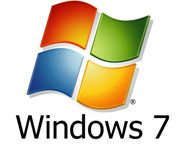What the end of Windows 7 Mainstream Support means
Mainstream support for the Windows 7 operating system ends today.
Windows 7 is the operating system with the largest market share currently as it is used on more than 50% of all desktop systems according to several independent usage share tracking companies.
Mainstream support is the first of three support phases of any Microsoft operating system. It is followed by an extended support phase and a final phase in which a product is not officially supported by Microsoft anymore but help and information about it are still available online.
Today's end of mainstream support for Windows 7 marks the end of the first phase and the beginning of the extended support phase.
But what does it mean for existing Windows 7 users and companies?
 If you break it down to the bare essentials, it means that Microsoft won't add new features to the operating system, won't produce non-security updates anymore and limits support for the system.
If you break it down to the bare essentials, it means that Microsoft won't add new features to the operating system, won't produce non-security updates anymore and limits support for the system.
Microsoft will produce security updates for the system during the extended support phase just like before. The second phase ends January 14, 2020 which means that devices running Windows 7 will receive important security patches until that time.
Since features are not added anymore to the system, it may mean that new technologies won't be supported by it. Some features landing in Microsoft's upcoming operating system Windows 10, DirectX 12 for instance and maybe also the "Spartan" browser, won't be made available for Windows 7.
It is still possible that some tools and programs will be released individually by Microsoft that support Windows 7 though.
Microsoft plans to release Windows 10 in the fourth quarter of 2015. It is likely that it will run upgrade promotions during that time as well and it is even rumored that some users may receive updates to Windows 10 for free.
Nothing is set into stone yet but what seems certain is that Windows 8 is out of the picture.
| Products Released | Lifecycle Start Date | Mainstream Support End Date | Extended Support End Date | Service Pack Support End Date |
|---|---|---|---|---|
| Windows 7 Enterprise | 10/22/2009 | 1/13/2015 | 1/14/2020 | 4/9/2013 |
| Windows 7 Enterprise N | 10/22/2009 | 1/13/2015 | 1/14/2020 | 4/9/2013 |
| Windows 7 Home Basic | 10/22/2009 | 1/13/2015 | 1/14/2020 | 4/9/2013 |
| Windows 7 Home Premium | 10/22/2009 | 1/13/2015 | 1/14/2020 | 4/9/2013 |
| Windows 7 Professional | 10/22/2009 | 1/13/2015 | 1/14/2020 | 4/9/2013 |
| Windows 7 Professional for Embedded Systems | 10/22/2009 | 1/13/2015 | 1/14/2020 | 4/9/2013 |
| Windows 7 Professional N | 10/22/2009 | 1/13/2015 | 1/14/2020 | 4/9/2013 |
Considering that new versions of Windows are released every three years right now, it is theoretically possible to wait until the version after Windows 10 gets released (Windows 11 or whatever Microsoft may call it). It would be available in the fourth quarter of 2018 if things remain as they are right now.
With all that said, rumors suggest that Microsoft may change Windows development cycles and how the system is distributed (subscription based service) as well. Maybe additional information about all that will be made available later this month when a new version of Windows 10 will be released by the company.
Regardless of that, Windows 7 users can use the system safely for another five years before they need to make a decision on what to use afterwards.
Now You: Which operating system will you be using after Windows 7?
This article was first seen on ComTek's "TekBits" Technology News

- Log in to post comments